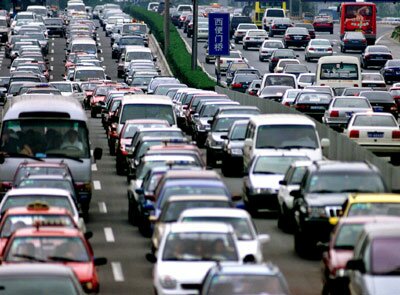When looking back at my many blogs I've written since the beginning of the school year I noticed many reoccurring themes. For the first half of the year I talked a lot about the American dream, hard work, and competition. For the second quarter of my school year it was largely composed of a series on heroism. It was incredibly interesting looking back at the ideas I created from one week to the next. What I noticed in society often had the same underlying themes.
During the first quarter I often noticed how hard work and competition and the American dream interconnected to shape the world around me. As seen in the commercials I watched (
"We All Aspire"), what my teachers asked about in class discussion (
"Not Quite Conformity" and
"Just Can't Resist Showing Off A Little"), and what my classmates discussed (
"Patience and Hard Work"). I was soon to define that the American dream is most likely to be achieved through some serious hard work. I will have to defeat my competitors on the playing field and in the classroom. I must be number one. Though I'm not sure I agree with that idea, it's incredible how apparent it is in the area I live in. Where I am "nobody ever set their sights on second best" as seen in the commercial for the new Samsung phone mentioned in "We All Aspire" . That ideal, I have found, has been the motivation behind most of my activities for the majority of my life. It's always there, pushing me, in the classroom, in the boat at rowing practice, on the ice at hockey, and anywhere where there is somebody else who wants the same spot, who wants to win.

During my second half of this semester I have talked a lot about heroism and, more specifically, what makes a hero. I looked at multiple tales of heroism. I found so many reoccurring details. Always a group of bystanders save the day. None have any ties to the victim. But all believe that anything is worth saving the precious gift of life. I noticed in many of my posts that I asked the same question, what makes a hero? Probably aggravating to ask the same question five times in a row, but it was a pressing one. The answer looked so obvious-a hero risks his or her life to save another's. But then why don't firemen get put into the paper everyday? Why don't the soldiers who loose their lives to protect ours have the headline on every newspaper? There had to be something more to it than that. I realized it by the end. In my final post of the series (
"Heroism: The Ordinary Being Extraordinary") I finally answered the question, what makes a hero? The people who saved the victim's life, were people just like you and me. It wasn't their job to save people like a fireman's or a soldier's. It was just in their nature to save someone else in need.
I really enjoyed re-evaluating my blog posts throughout the year. I didn't even realize the themes that had been playing in the background throughout every post I had written. Also, it made me smile because I could definitely tell what mood I was in when I wrote each post. I was either tired or upset when I wrote the ones that sounded bitter in my ears and I was having a pleasant day when I read the posts that had deep themes and happy endings. I'm incredibly exited to keep blogging for the rest of the year. There are many themes that I found that I want to develop further, like technology and speed and conformity or lack there of. So here's to an end of a blogging journey and the start of a new adventure!
 My favorite blog post of this year is my most recent one: "Get Rich Quick". It is my favorite blog post because the research I did before writing the blog post was really interesting to me. It was always difficult to find something to write about each week that interested me. An interest in the topic also made it a better blog post than the others I have written.
My favorite blog post of this year is my most recent one: "Get Rich Quick". It is my favorite blog post because the research I did before writing the blog post was really interesting to me. It was always difficult to find something to write about each week that interested me. An interest in the topic also made it a better blog post than the others I have written.























